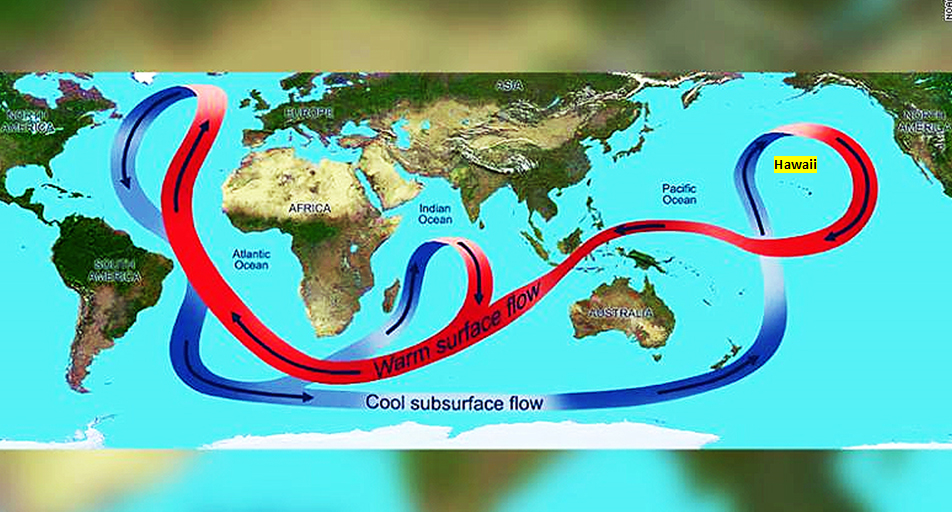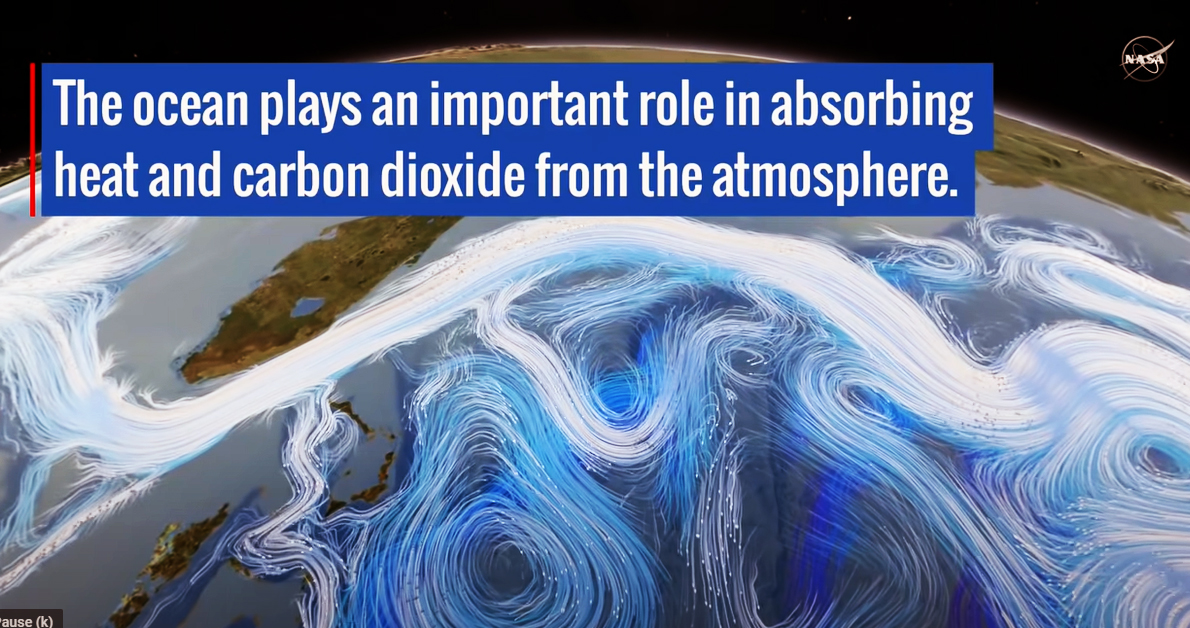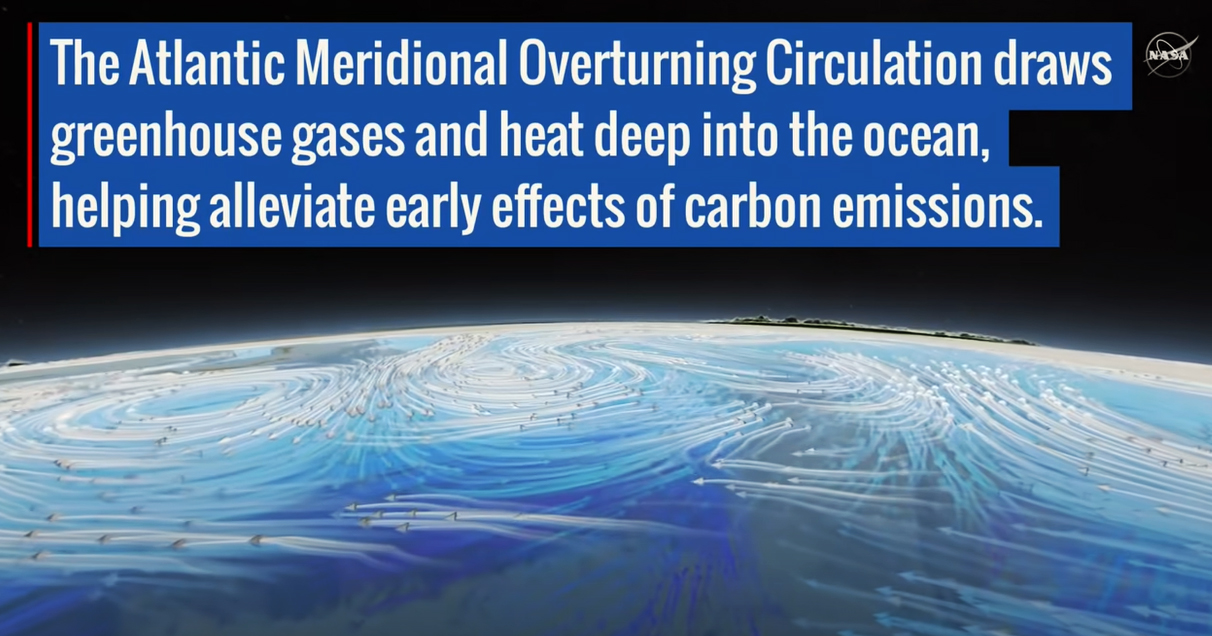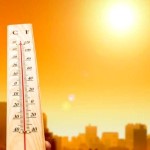The TV news anchor calmly reported”… “A crucial ocean circulation is showing signs of instability. Its shutdown would have serious impacts on our weather.”
A graph appeared in the TV screen as she dutifully read her script: “A crucial system of currents in the Atlantic Ocean that helps control temperatures in the Northern Hemisphere and has implications for the entire planet’s weather systems is showing signs of instability due to human-made climate change, scientists say. Its collapse would have dire consequences for our weather and life on Earth.”

The third party news validation came in the form of this statement… “This has been predicted, basically, for decades that this circulation would weaken in response to global warming. And now we have the strongest evidence that this is already happening,” said Stefan Rahmstorf of Potsdam University who contributed to the Atlantic Meridional Overturning Circulation (AMOC) research.
… The weekend’s nightly news anchor then quickly switched to the day’s most important news development, the Olympic Games’ skateboarding contest results.
The Atlantic Meridional Overturning Circulation (AMOC) transports water across the planet’s oceans, including the Atlantic, Pacific and Indian. The region contributing to the global slowdown is the North Atlantic, is from the meltdown of Greenland’s massive ice sheet, now introducing unprecedented massive amounts of cold fresh water in the North Atlantic, also at unprecedented melting rates.
The
Greenland ice sheet meltdown is contributing to both a rise in sea levels and through temperature change and reducing saliently through the AMOC temperature conveyor belt which circulates between the Atlantic, Pacific, and Indian Oceans. The report concluded;
“This indicates that the slowdown is likely not a natural change but the result of human influence.” The AMOC has a profound influence on global climate, and particularly in North America and Europe. Evidence of an ongoing weakening of the circulation is critical for the interpretation of future projections of regional and global climate,” said Andrew Meijers, deputy science leader of polar oceans at British Antarctic Survey.
Researchers say it could be close to a collapse from a strong circulation to a weak circulation, though the threshold for such a collapse is still uncertain, but cause and effect of the trend is undeniably human-induced global warming.
Heavy rain and melting ice sheets are making the water in the North Atlantic Ocean less salty, which makes it lighter and less likely to sink. If the water in this region becomes too light, the entire circulation will be disrupted. As warm water currents move north, they typically turn back south as it gets cooler and heavier. Added freshwater from the melting ice is causing this turn to be slower because of reduced salinity.
Hotter heat waves, stronger hurricanes
Global weather patterns are critically linked with the ocean circulations and their transport of heat and nutrients around the planet.
An increase in heat waves across Europe and
stronger hurricanes closer to the US coastline because of warmer water drifting closer to the coast can be linked to the ocean circulation, Rahmstorf said.
“The world’s seven warmest years have all occurred since 2014, with 10 of the warmest years occurring since 2005,” said NOAA. Heat waves are becoming more frequent already.
The ocean and the currents also play a role in absorbing carbon dioxide, the most dominant greenhouse gas, from the atmosphere. The changing currents could decrease the amount of carbon being taken out of the atmosphere, according to NASA.
Marine Impacts
Marine organisms “very strongly depend on these ocean currents, which basically set the conditions for the whole ecosystem in terms of nutrient supply, temperature, and salinity conditions,” Rahmstorf said.
When asked whether the AMOC could slow down further or even stop
Global weather patterns are critically linked to the circulation and its transport of heat and nutrients around the planet. A collapse of this system would result in significant and abrupt changes, including fast sea level rise, more extreme winters in Western Europe and disruptions to hurricane and monsoon systems in the Pacific and tropics.
It could also have a cascading effect and destabilize other components of the Earth’s climate system, including the Antarctic ice sheet and the Amazon rainforest.
This scenario was the premise for the 2004 climate science fiction film “The Day After Tomorrow,” in which a series of extreme weather disasters strike after climate change caused the AMOC to collapse.
The circulation is weaker than it has been in around 1,000 years, scientists had previously said, but they did not know whether it had actually been destabilized or undergoing natural changes. This week’s study used eight datasets looking at surface temperatures and salinity in the North Atlantic over a period of 150 years, and found global warming was driving the destabilization. “The difference is crucial,” the study’s author, Niklas Boers from the Potsdam Institute for Climate Impact Research.
“Despite a lot of research over the last decade on this, it’s very hard to pin down quantitatively, how far away is this tipping point. But the kind of model simulations that I know suggest that if you weaken this circulation by roughly half, you’re getting into a critical state. And so this could well … happen by the end of the century,” Rahmstorf said.
“We should (strive to) stay well clear of that tipping point because the consequences if the circulation would break down all together would be dramatic and outside our control.”







Leave a Reply
Join the Community discussion now - your email address will not be published, remains secure and confidential. Mahalo.